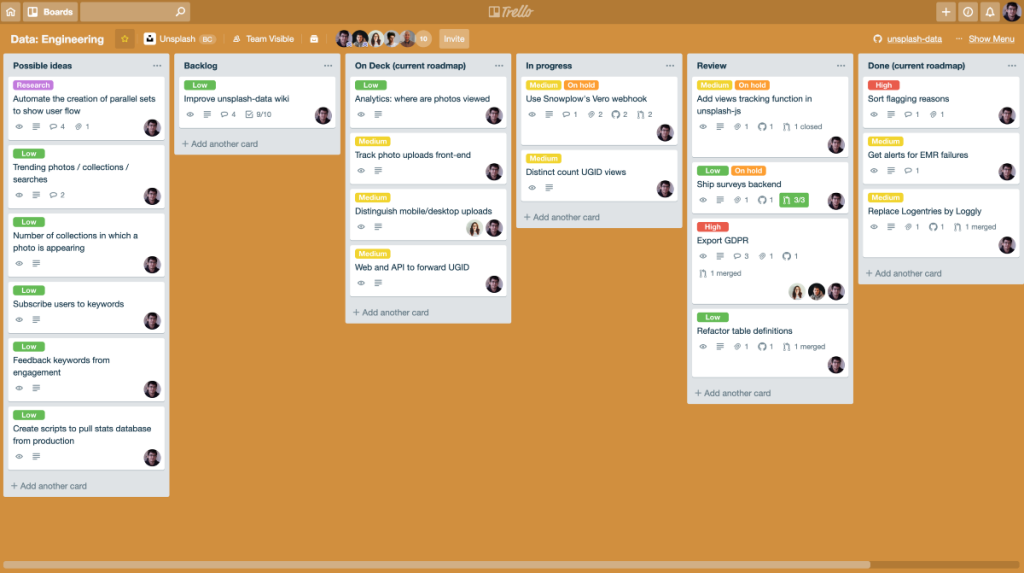What is Roadmap Completion?
Roadmap completion refers to the process of achieving the goals and milestones set in a roadmap. A roadmap is a strategic plan that outlines the direction and timeline for a project or business. It serves as a guide, providing a clear path to success. Roadmap completion is the culmination of efforts, ensuring that the objectives outlined in the roadmap are met.
Importance of Measuring Roadmap Completion
Measuring roadmap completion is crucial for several reasons. First and most importantly, it allows you to assess the progress made towards your goals. Through tracking and looking into the completion of milestones, you can identify areas that need improvement and make necessary adjustments. Furthermore, measuring roadmap completion not only provides a sense of accomplishment but also serves as motivation for the team, boosting morale and productivity. In essence, this ongoing evaluation process contributes to the overall success of the project by nurturing continuous improvement and maintaining a positive team dynamic.
How do You Complete a Roadmap?
Completing a roadmap requires careful planning, execution, and continuous monitoring. It starts with a clear understanding of the objectives and milestones set in the roadmap. Each milestone should be broken down into smaller, easily handled tasks. Assigning responsibilities and setting deadlines ensures accountability and progress. Regular checkpoints and reviews help to track the completion of tasks and identify any roadblocks. Additionally, flexibility is crucial, as unexpected circumstances may require adjustments to the roadmap along the way.
What is the Roadmap Process?
The roadmap process involves several stages that contribute to the successful completion of goals. It begins with the identification of objectives and priorities. These align with the overall strategy and vision of the project or business. The next step involves creating a timeline and allocating resources accordingly. Communicate the roadmap to all stakeholders, ensuring clarity and shared understanding. As the project progresses, actively conduct regular updates and evaluations to gauge progress and make necessary adjustments. The roadmap process requires continuous monitoring and adaptation.
What is a Roadmap in Business?
In a business context, a roadmap serves as a strategic plan that outlines the goals, objectives, and initiatives for achieving long-term success. This comprehensive document not only provides a roadmap for growth but also guides decision-making processes. By considering various aspects, such as marketing, sales, operations, and finance, a business roadmap ensures that all departments work towards the same vision. Consequently, it fosters a cohesive approach and encourages collaboration among different areas of the business. This integrated approach allows businesses to align their resources, prioritize initiatives, and adapt to market changes effectively. Overall, a well-crafted business roadmap serves as a dynamic tool for guiding the organization towards its desired outcomes.

Understanding Velocity Metrics
Speed measurements, known as velocity metrics, help keep tabs on how fast tasks or user stories get done in a specific period. This is often used in agile project management, like Scrum. Velocity metrics give a peek into the team’s productivity and assist in estimating future progress. Velocity is usually measured in story points, showing the effort needed to finish a task. By looking at these metrics, project managers can spot problems, improve workflows, and base decisions on data.
Using Velocity Metrics to Track Progress
Velocity metrics play a crucial role in tracking the progress of roadmap completion. Actively monitoring the team’s velocity enables project managers to ensure that tasks are being completed at an optimal pace. Furthermore, it allows for the early identification of potential delays or obstacles, facilitating the implementation of proactive measures. Additionally, velocity metrics provide visibility into team capacity and resource allocation, ensuring that workload is distributed evenly. Moreover, regularly reviewing velocity metrics is instrumental in identifying trends and patterns, allowing for continuous improvement and better planning.
Common Roadmap Completion Metrics
Several metrics can be employed to measure roadmap completion, and some common ones include:
- Task Completion Rate: This metric calculates the percentage of completed tasks against the total number of tasks in the roadmap, offering an overall view of progress.
- Milestone Achievement: Tracking the completion of significant milestones provides a clear indication of progress towards the overall goals.
- Time-to-Completion: This metric measures the time taken to complete tasks or milestones, aiding in identifying delays and potential areas for improvement.
- Resource Utilization: Monitoring the utilization of resources, such as team members or budget, ensures efficient allocation and productivity.
- Customer Satisfaction: This metric assesses the satisfaction of customers or end-users, providing insight into whether the roadmap is meeting their expectations.
By methodically evaluating these metrics, businesses can gain a comprehensive understanding of their roadmap progress and make informed decisions to enhance efficiency and meet objectives effectively.
How to Calculate Roadmap Completion Metrics
Calculating roadmap completion metrics requires collecting relevant data and applying appropriate formulas. Here are some examples of how to calculate common roadmap completion metrics:
1. Task Completion Rate: Divide the number of completed tasks by the total number of tasks and multiply by 100 to get the percentage.
2. Milestone Achievement: Divide the number of achieved milestones by the total number of milestones and multiply by 100 to get the percentage.
3. Time-to-Completion: Calculate the time taken to complete a task or milestone by subtracting the start date from the end date.
4. Resource Utilization: Divide the actual resource utilization by the planned resource utilization and multiply by 100 to get the percentage.
5. Customer Satisfaction: Conduct surveys or gather feedback to measure customer satisfaction on a scale or through qualitative analysis.
Roadmap Completion in DevOps
In the context of DevOps, roadmap completion takes on a unique perspective. DevOps, which combines development and operations, aims for seamless collaboration and continuous delivery. Roadmap completion in DevOps involves aligning development and operations goals, breaking down silos, and ensuring smooth integration throughout the process. Moreover, velocity metrics are particularly important in DevOps. They play a vital role in identifying bottlenecks, improving workflows, and ensuring the timely delivery of software or services.
Roadmap Completion Template
A roadmap completion template provides a structured framework for tracking and monitoring progress. Typically, it includes sections for goals, milestones, tasks, responsible parties, deadlines, and progress tracking. Utilizing such a template ensures consistency in documenting and evaluating roadmap completion across projects or businesses. Moreover, it can be customized based on specific needs, serving as a valuable and adaptable tool for project managers and stakeholders alike.

Tools for Tracking and Analyzing Roadmap Completion
There are various tools available to track and analyze roadmap completion. These tools facilitate efficient collaboration, real-time progress tracking, and data visualization. Some popular options include:
1. Project Management Software: Tools like Jira and Trello offer features for creating and managing roadmaps, tracking tasks, and monitoring progress.
2. Analytics Platforms: Tools like Google Analytics or Mixpanel provide insights into user behavior, conversion rates, and customer satisfaction, helping assess the impact of roadmap completion.
Roadmap Completion Example
To illustrate the concept of roadmap completion, let’s consider an example. Imagine a software development company that aims to release a new product within six months. The roadmap includes milestones such as completing the user interface design, developing core features, and carring out user testing. By using velocity metrics and other roadmap completion metrics, the project manager can track the progress of each milestone, identify potential bottlenecks, and ensure timely delivery. Regular checkpoints and reviews allow for adjustments and optimization, resulting in a successful roadmap completion.
Conclusion
Roadmap completion stands as a critical aspect of achieving goals and objectives in both projects and businesses. The measurement and tracking of progress, facilitated by velocity metrics and other completion metrics, provide valuable insights into the team’s productivity and support data-driven decision-making. By deploying the appropriate tools and adhering to a structured roadmap process, businesses can ensure the successful completion of their roadmap, thereby driving growth and overall success.
Now armed with a comprehensive understanding of roadmap completion and velocity metrics, it’s time to apply these principles to your own projects or business. Establish clear goals, create a roadmap, and regularly monitor progress using the appropriate metrics. Through careful planning and diligent tracking, you can successfully achieve your milestones and drive the overall success of your efforts.
Read more articles about metrcis to incorporate in your business and start the progress to success.
If you enjoyed the read, share this article with your friends 😉
IT METRICS TO BECOME AN EXPERT














Leave a Reply